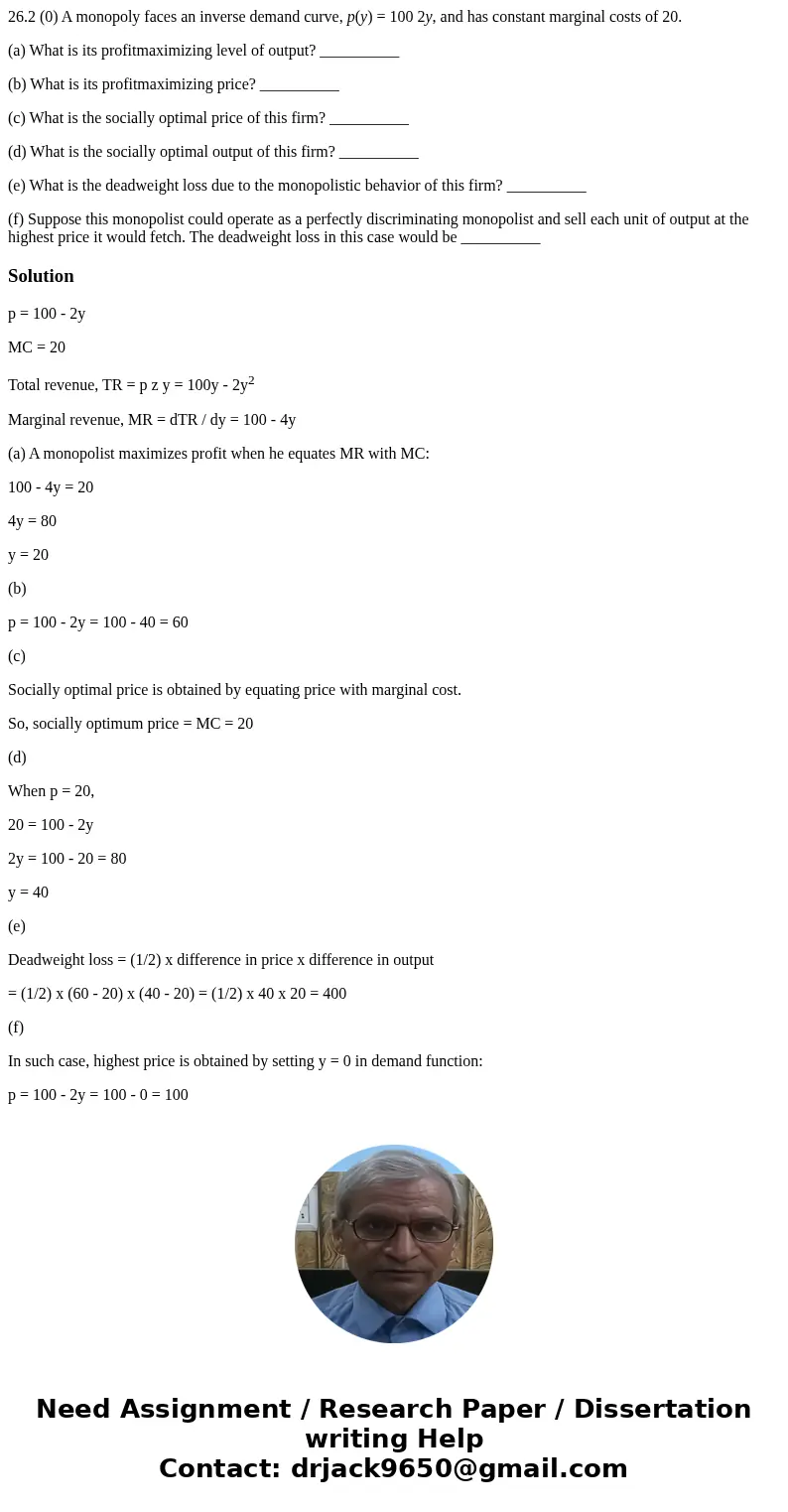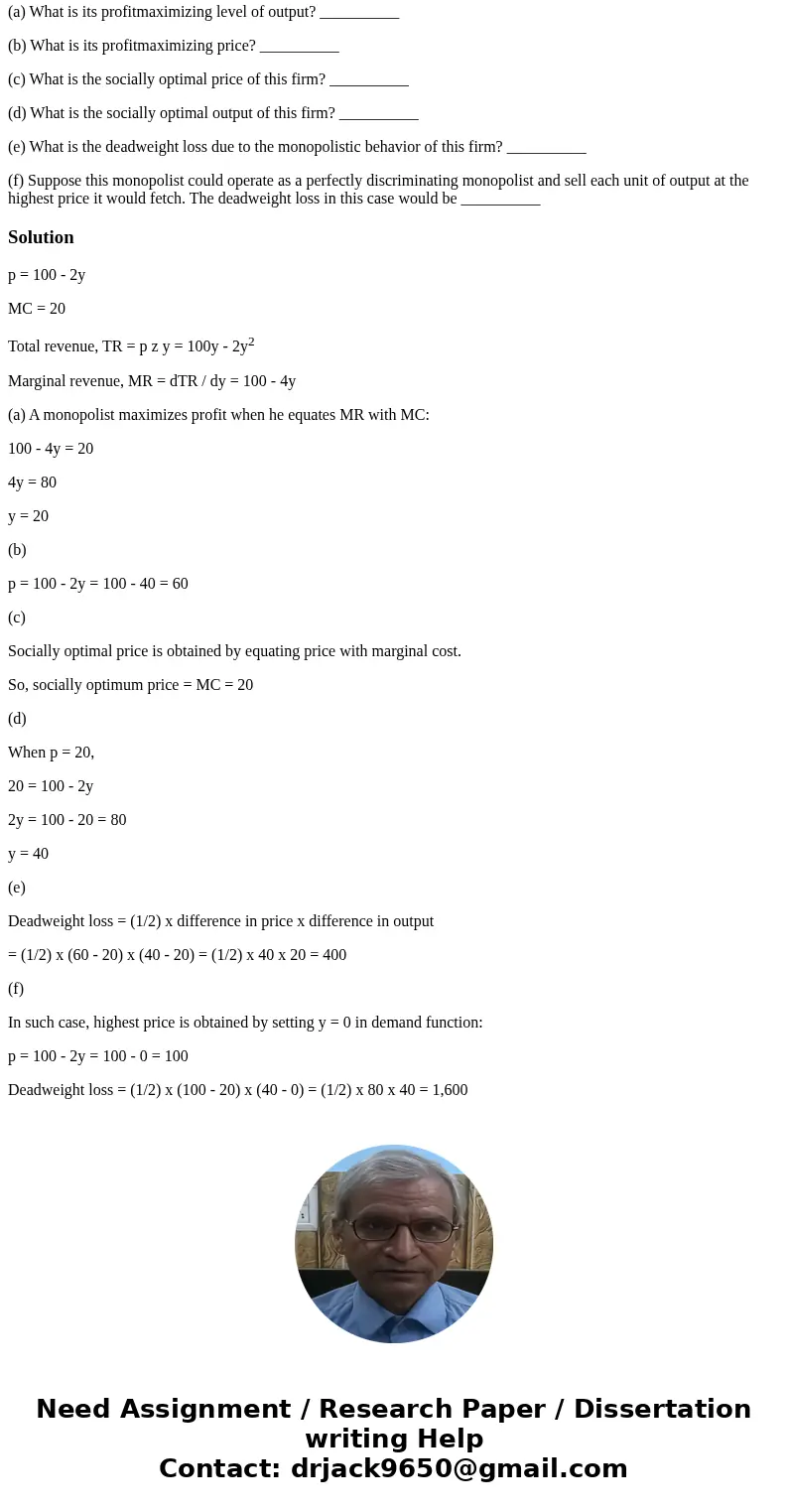262 0 A monopoly faces an inverse demand curve py 100 2y an
26.2 (0) A monopoly faces an inverse demand curve, p(y) = 100 2y, and has constant marginal costs of 20.
(a) What is its profitmaximizing level of output? __________
(b) What is its profitmaximizing price? __________
(c) What is the socially optimal price of this firm? __________
(d) What is the socially optimal output of this firm? __________
(e) What is the deadweight loss due to the monopolistic behavior of this firm? __________
(f) Suppose this monopolist could operate as a perfectly discriminating monopolist and sell each unit of output at the highest price it would fetch. The deadweight loss in this case would be __________
Solution
p = 100 - 2y
MC = 20
Total revenue, TR = p z y = 100y - 2y2
Marginal revenue, MR = dTR / dy = 100 - 4y
(a) A monopolist maximizes profit when he equates MR with MC:
100 - 4y = 20
4y = 80
y = 20
(b)
p = 100 - 2y = 100 - 40 = 60
(c)
Socially optimal price is obtained by equating price with marginal cost.
So, socially optimum price = MC = 20
(d)
When p = 20,
20 = 100 - 2y
2y = 100 - 20 = 80
y = 40
(e)
Deadweight loss = (1/2) x difference in price x difference in output
= (1/2) x (60 - 20) x (40 - 20) = (1/2) x 40 x 20 = 400
(f)
In such case, highest price is obtained by setting y = 0 in demand function:
p = 100 - 2y = 100 - 0 = 100
Deadweight loss = (1/2) x (100 - 20) x (40 - 0) = (1/2) x 80 x 40 = 1,600


 Homework Sourse
Homework Sourse